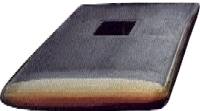Aurora IV Introduction
The University of Minnesota Solar Vehicle Project enjoyed much success with its second generation solar car, Aurora II, taking 2nd place in Sunrayce 95, less than 18 minutes behind MIT, and 2nd in class in the 1995 World Solar Rally in Akita, Japan. The third generation car, the Aurora3, competed in Sunrayce 97 where it placed 11th out of 36 vehicles from around the US. When the Aurora3 was introduced into international racing, it won its Class Championship at the 1998 World Solar-Car Rallye.
Not resting on its laurels, Minnesota designed and constructed its fourth generation solar vehicle, the Aurora 4. The 38 members of the Minnesota Team have spent two years improving the key aspects of the design and manufacturing to have a car which is technically superior to its award and race winning predecessors.
The Team will compete with the Aurora 4, its newest vehicle, in Sunrayce 99 and the 1999 World Solar Challenge. Stay tuned to this site for updates from the races.
Sunrayce 99 pits Aurora 4 against top engineering schools from all over North America. The race starts in Washington, DC. on June 20th and travels 1300 miles over nine racing days to finish in Orlando, FL on June 29th.
The Australian World Solar Challenge spans the Stuart Highway, 1,880 miles, from Darwin in the northern most tip to Adelaide in the south. Cars from around the world will compete in this race for what is known as the highest honor in solar car racing.
Aurora 4 at a glance:
Aurora 4 has over 1,900 solar cells
The top speed of Aurora 4 is over 80 mph!
At 55 mph, the Aurora 4 only uses the power of a hair drier, 1600 Watts!
Learn more about the Aurora 4 in a specially designed tour that takes you through the project structure, detailing the various design teams and their contributions toward creating one of the world's most efficient solar vehicles.


